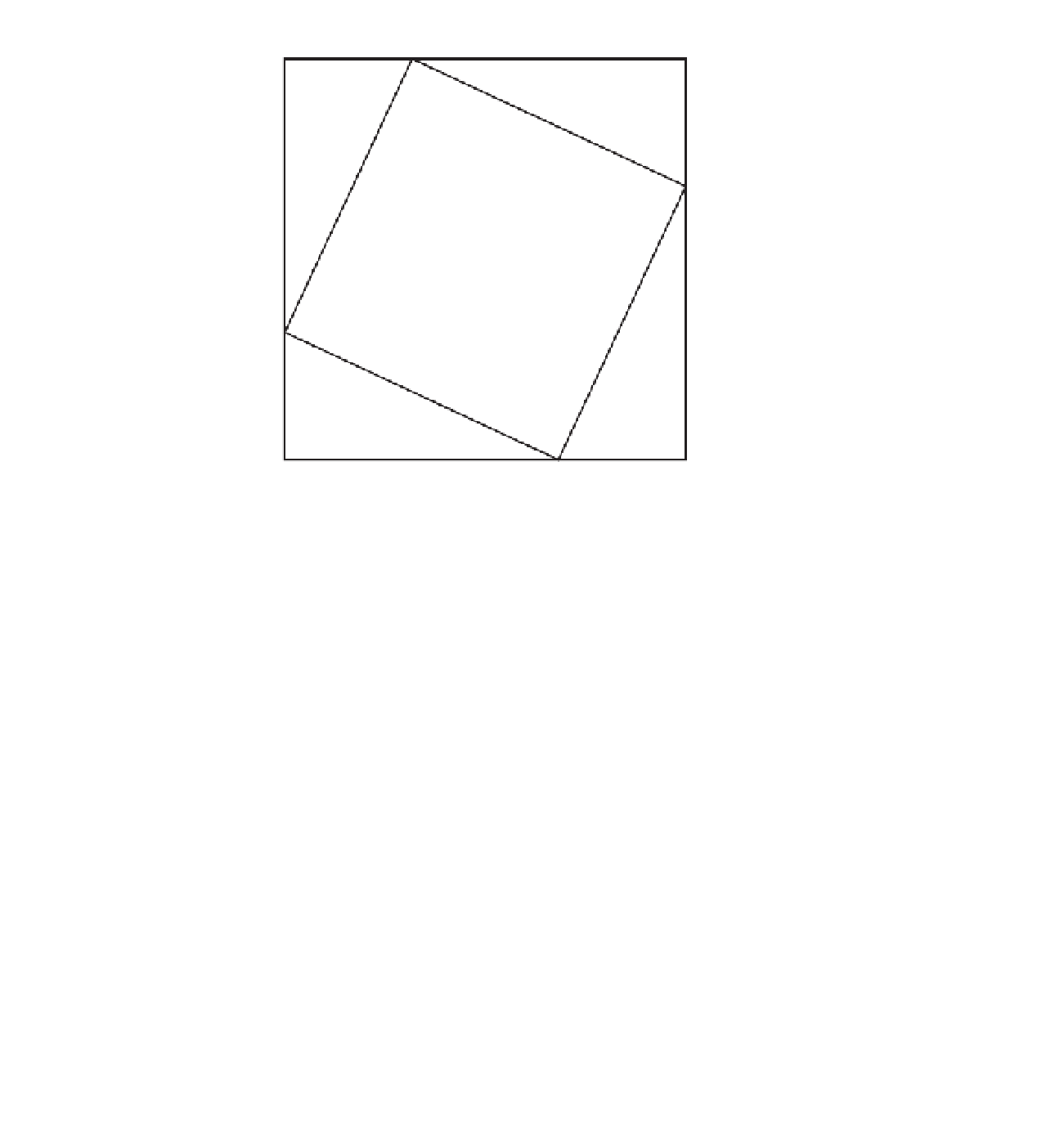Geography Reference
In-Depth Information
b
a
b
c
a
c
c
a
c
b
a
b
FIGURE 8-13 Re-proving the Pythagorean theorem
Subtracting 2
ab
from each side of the equation gives the Law of Pythagoras:
a
2
b
2
c
2
+
=
Finding the Closest of Multiple Source Cells
The raster of source cells that serves as input to Euclidean distance may consist of several single cells,
clumps of cells (contiguous cells), a linear structure of several cells, or any combination of these. For each
cell in the output raster, the straight-line distance to the closest source cell is calculated. This happens
automatically. You simply apply the Euclidean distance tool and the newly generated raster contains the
closest distances in all the other cells.
Many distance problems involve several source cells instead of a single one. Perhaps you are flying along
in your private plane, and because of an ominous new noise coming from the engine, you develop a
strong interest in knowing the distance to the closest of several airports in the area. The airports might be
recorded as source cells. If you had time to fire up your portable GIS, connected to your GPS, no matter
which cell you were in, the distance to the closest airport would be shown.
Another example: Suppose that you have a neighborhood of houses that need to be connected to a power
line. The power line is represented as a line of source cells; houses are built on other cells. You want to
find the shortest distance from each house to the power line, so you can calculate the minimum length
of wire required. Also, because of electrical requirements, there is a maximum distance the wire can be
strung, so you will also need to identify the cells that are more than that distance away.





Search WWH ::

Custom Search